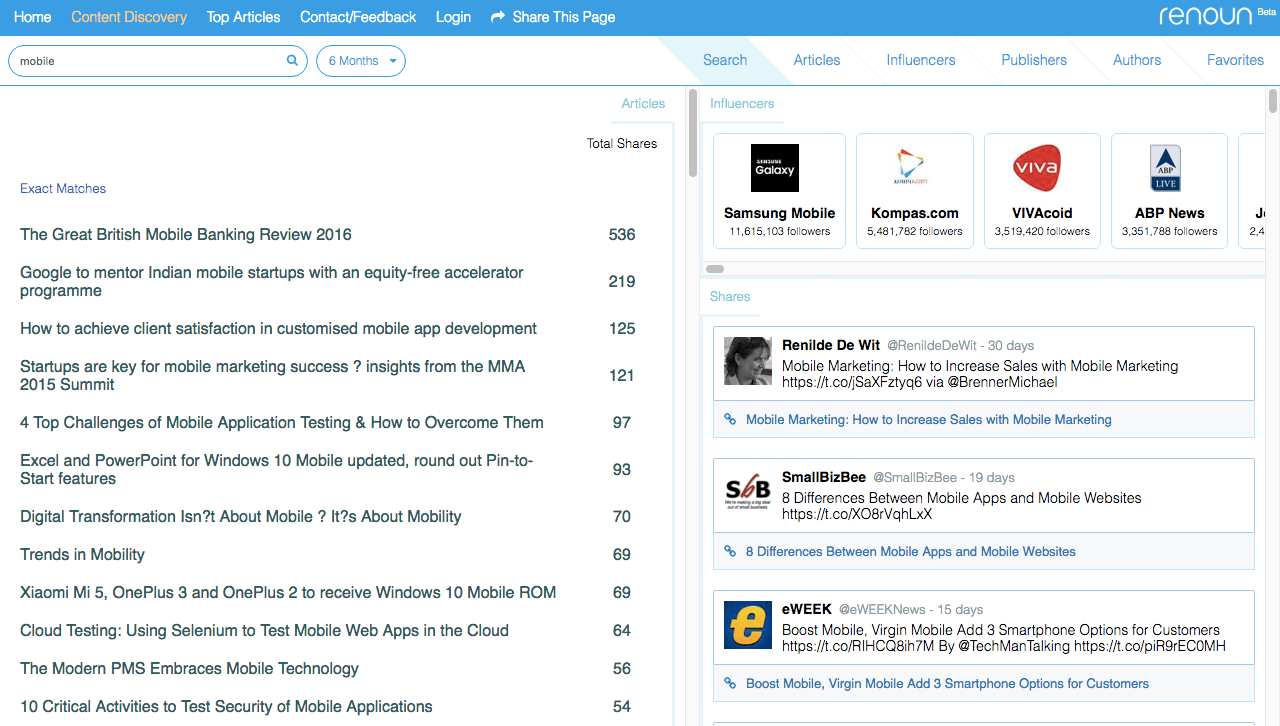Are content discovery platforms replacing generic search?
As content discovery continues its upward march, columnist Tamar Weinberg takes a close look at what it means for the search industry and the tools that are helping to fuel this growth.

Remember when we used to get excited about Google’s instant results reading our minds? How about just the thought of typing in a few letters and retrieving what seemed like an endless number of results? The introduction of search engines has fundamentally changed the way we experience the internet, making it super-easy to get to the results and move on in our journey to acquire information.
However, these old and yet still active search tools rely on two main things: 1) Trusting the site to find relevant content; 2) The search user knowing specifically what he or she is looking for, thus allowing them to narrow down the options to best meet the intended search objectives.
Now, think about your current routine. Given its exponential growth in recent years, chances are that you are well aware of the emergence of content discovery platforms, one of the trendier parts of the content marketing realm.
For those active in the content curation and marketing industry, such platforms are perhaps now your go-to sources for discovering relevant articles, headlines, trending news, influencers and social media-related activity.
To understand what this means for the search industry, it helps to break down the main components of content discovery and determine the implications of this trend for how we find and absorb content. By answering a few of the following principal questions related to search and discovery and briefly exploring some tools that help leverage content discovery performance, we can better grasp its current and potential impact.
Are we transitioning from Search to Discovery?
Content discovery gives users a platform to find information that is highly personalized and relevant, thus reducing the dissemination of irrelevant content. For instance, Outbrain and Taboola capture user interest within a publishing industry website and match their content recommendations based on what captures the attention of the target audience.
Taboola has made its goal to build a new category called Discovery that is “similar to a search engine, but in reverse,” indicating that discovery is starting to trump search.
Meanwhile, Renoun is a useful starting point for users interested in idea generation and in obtaining concrete information and stats about a particular keyword or phrase. This tool reveals what content is trending based on specific keywords and phrases and across what channels, as well as who (a brand or an influential writer) is leading the discussions.

With an array of these and similar tools such as Curiyo at their disposal, internet users are witnessing the transition from a search query to a more elaborative and personalized content discovery experience, one guided by their own unique interests and industry-related results.
Are brands, publishers and advertisers gaining from this transition?
Such platforms are also highly beneficial for publishers and advertisers, as they encourage readers to move to different points along their journey, thus providing ample opportunities to monetize and capitalize on their engagement levels.
Such activity can be analyzed based on multiple parameters, from time spent on a specific site to the path taken by the user to reach the different content sources. This information can be used to effectively target users with relevant advertisement campaigns and contribute to lead generation.
Lastly, with the emergence of content discovery platforms came the birth of online marketplaces where companies can look for content curators to help spread their brand’s message.
For instance, ClearVoice provides this very content curation platform, attracting both up-and-coming writers and already established influencers. It offers content curators and marketers software for effectively managing content-related assignments based on data-driven content discovery tools.

What does this all mean for the future of generic search?
While there is a massive emergence of content discovery platforms, they aren’t about to replace generic search completely. After all, you will still find plenty of users who automatically open their Google Chrome or other browser extension to start (and end) their search process.
However, even with that said, more and more users are hungry for relevant information, and at a rapid pace.
With this diminished attention span, users will continue appreciating the value of content discovery networks, as they play a major role in bridging the gap between request and results, between access to information and relevant content, and between the common search user and the users keen on obtaining concrete and actionable information to drive decisions.
With this in mind, what does seem clear is that the older search process is now a bit outdated. We are living in a highly competitive digital landscape largely defined by the need for a more personalized web experience, with access to just the content taken for granted.
Users today are increasingly exposed to content driven by industry results, their own unique interests and past browsing history, thus reducing the divide between the information seeker and the content supplier, whether a publisher or a blogger.
What will the future of content discovery look like?
It will be interesting to see if content discovery platforms will continue to grow in size and influence and if internet content curators and seekers alike will be able to maintain their digital content demand and supply balance.
As content discovery continues to become a more crowded field, these platforms will need to be explored and tested on different target audiences to evaluate their effectiveness and to align themselves with the overall company and content marketing objectives.
Contributing authors are invited to create content for MarTech and are chosen for their expertise and contribution to the search community. Our contributors work under the oversight of the editorial staff and contributions are checked for quality and relevance to our readers. MarTech is owned by Semrush. Contributor was not asked to make any direct or indirect mentions of Semrush. The opinions they express are their own.
Related stories
New on MarTech